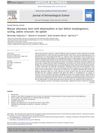The Naked (N) Mutation, Chromosome 15
August 2020
TLDR The naked mutation in mice causes hair loss and helps identify keratin genes.
The naked (N) mutation in mice, discovered at Latvia University, resulted in homozygous mice lacking a hair coat and heterozygous mice losing their initial hair coat between 10 to 14 days of age. This mutation was linked to the velvet coat (Ve) mutation on Chromosome 15, aiding in the identification of mouse keratin genes. Although the naked mutation resembled the human condition hydrotic ectodermal dysplasia, the amino acid changes in hair differed between species. Similar hereditary alopecia was observed in certain dog breeds, such as Miniature poodles and Cocker Spaniels.


